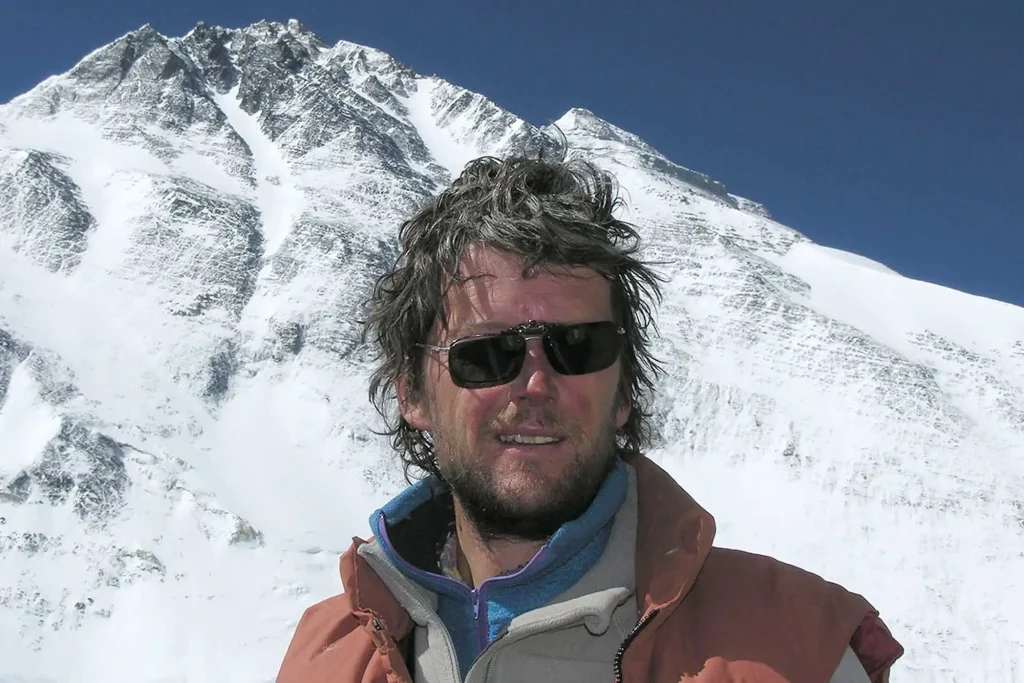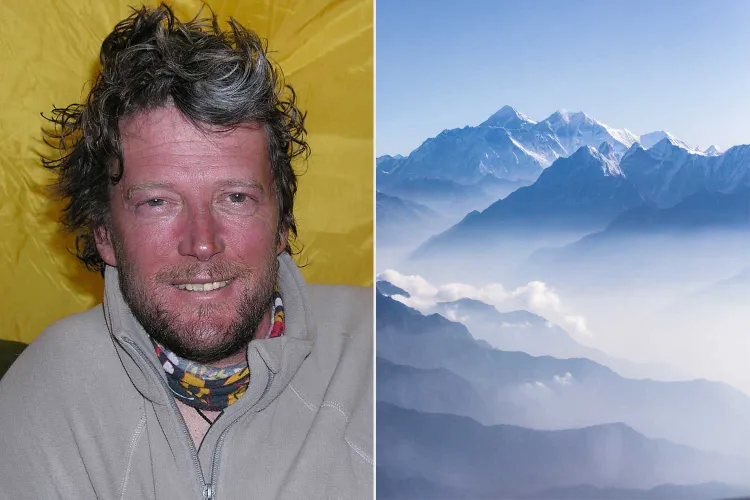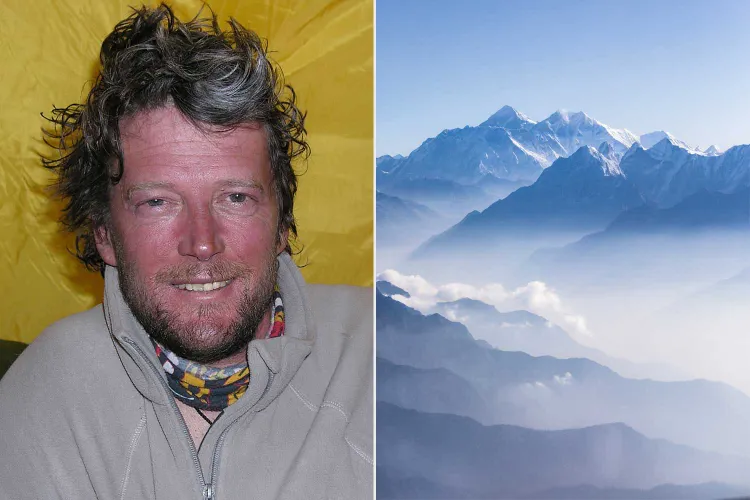Climbers Told His Family He Died on Mount Everest. Hours Later, Sherpas Found Him Stripped of His Gear but Miraculously Alive at 28,000 Feet
For most people, Mount Everest is a dream — a test of endurance, willpower, and human limits. But for Australian climber Lincoln Hall, it became something far more surreal: a journey through the edge of death itself. In May 2006, Hall was pronounced dead by his climbing team, his body left high on the mountain’s “death zone” as temperatures plummeted and oxygen thinned. His family, devastated, began to mourn. Yet by morning, news broke that would shock the entire mountaineering world — Lincoln Hall was alive.

Hall’s story remains one of the most extraordinary survival tales in modern climbing history. What unfolded in those hours on Everest defies explanation — a mix of endurance, confusion, and sheer human resilience that turned tragedy into miracle.
At 28,000 feet above sea level, the air is so thin that the human body slowly begins to shut down. Even with supplemental oxygen, each step feels like a battle. The zone above 8,000 meters is known as the “death zone” — a place where the body can no longer acclimatize and survival time is limited. Climbers move with urgency here, knowing that too long in this region means certain death.
Lincoln Hall, a 50-year-old Australian mountaineer, had reached Everest’s summit on May 25, 2006. It was the fulfillment of a lifelong dream, one that had taken years of training, failed attempts, and immense personal risk. But as he began his descent, exhaustion and altitude sickness set in. He started to show signs of cerebral edema — swelling of the brain caused by lack of oxygen — a condition that clouds judgment, affects motor skills, and can lead to hallucinations or sudden collapse.

As night fell, Hall’s condition deteriorated rapidly. His teammates tried to help him down the mountain, but his body began shutting down. He drifted between lucidity and delirium, at times insisting he was fine, other times unable to move or speak. The group spent hours trying to revive him, but in the freezing cold, oxygen supplies dwindled and time ran out.
After hours of failed attempts, the decision was made to leave him. They radioed base camp: Lincoln Hall was gone. It was a heartbreaking call, but one that climbers on Everest know too well. In such thin air, rescuing someone who can no longer walk often means risking multiple lives.
When word reached Australia, Hall’s family began preparing for the worst. His wife, Barbara, and their two sons received the devastating news that he had perished on the mountain. Messages of condolence began pouring in from around the world. The climb, once a triumph, had become a tragedy.
But unknown to everyone below, Hall was not dead.
Somehow, after being left exposed on the ridge overnight, he woke up the next morning — confused, frostbitten, and stripped of most of his clothing and gear. Disoriented and suffering from hypoxia, he had removed his gloves, boots, and outer jacket — a common symptom of severe altitude sickness known as “paradoxical undressing,” where climbers near death feel an illusion of warmth and begin shedding layers.
When a team of climbers led by Dan Mazur, an American mountaineer, came across him early that morning, they couldn’t believe what they saw. Sitting cross-legged near a sheer drop, Hall smiled faintly and greeted them. “I imagine you’re surprised to see me here,” he said. The words stunned the rescuers.
Mazur and his team immediately knew that Hall was in critical condition. His hands and feet were frozen, his face was sunburned and swollen, and he was barely coherent. Yet he was alive — an impossible fact at that altitude after a night in the open. “He was like a ghost sitting there,” Mazur later told reporters. “No gloves, no hat, no oxygen — just sitting there talking as if nothing was wrong.”
The team faced a moral decision that every climber dreads. They were en route to the summit, just a few hours away from achieving their own goal. But continuing meant leaving Hall to die for certain. Without hesitation, Mazur’s group abandoned their summit attempt and radioed for help.
It would take over nine hours for Sherpas from Hall’s expedition to reach him. The terrain was treacherous, the air painfully thin, and Hall’s life hung in the balance. But against all odds, the Sherpas — led by Dawa Tenzing and four others — managed to reach him and begin the painstaking process of getting him down the mountain. They administered oxygen, wrapped him in warm gear, and slowly lowered him down using ropes and sheer physical effort.
Every step of the descent was a race against time. Rescue operations in the death zone are nearly impossible; helicopters can’t fly at such altitudes due to thin air, and most climbers barely have enough strength to save themselves, let alone another person. Yet the Sherpas pushed on, risking their own lives to bring Hall back.
After nearly twelve hours, they reached Camp Four, where doctors and other climbers were waiting. Hall’s survival was hailed as nothing short of miraculous. When news of his rescue reached base camp, cheers erupted. For his family back home, the phone call that followed was one they never expected to receive: Lincoln was alive.
In interviews after the ordeal, Hall recalled the bizarre clarity he felt during the night he was presumed dead. “I remember sitting there watching the sunrise over Tibet,” he said. “I felt peaceful. I thought I was dead, but I wasn’t afraid.” His memories of the event were fragmented — flashes of color, sensations of warmth, and conversations that may have never actually happened. Experts later said that his brain, deprived of oxygen, was likely in survival mode, operating on instinct and illusion.
His rescue reignited global debate over ethics on Everest. In the same climbing season, other incidents had made headlines, including the controversial death of British climber David Sharp, who died while dozens of climbers passed by. Hall’s survival stood in stark contrast — a reminder that compassion can and should override ambition on the mountain.
Many praised the Sherpas and Mazur’s team for their humanity. “They saved my life,” Hall later said. “There’s no question about it. I owe everything to them.” The rescue, which required coordination, courage, and sacrifice, remains one of the most remarkable acts of teamwork in mountaineering history.
Hall’s story also shined a light on the often-overlooked role of Sherpas — the Nepali climbers who guide and support expeditions on Everest. While Western climbers often receive media attention, it is the Sherpas who shoulder the most risk, carrying supplies, fixing ropes, and performing rescues in brutal conditions. In interviews after his return, Hall repeatedly emphasized their heroism. “They are the real heroes of Everest,” he said. “Without them, no one would come back.”
After his recovery, Hall returned home to Australia, where he was met with overwhelming emotion from friends, family, and fans who followed his ordeal. He later wrote a book, Dead Lucky: Life After Death on Mount Everest, chronicling his experience in vivid detail — not just as a story of survival, but as a reflection on life, mortality, and gratitude.
Hall continued to climb and work in adventure education, inspiring others with his story. He often spoke about how the experience changed his perspective on life. “When you come that close to dying, everything looks different,” he said. “You realize how fragile we are — and how powerful kindness can be.”
His survival became one of the defining mountaineering stories of the 21st century — not only because he lived when logic said he couldn’t, but because it reminded the world that heroism is measured not in summits reached, but in lives saved.
Lincoln Hall passed away in 2012 from mesothelioma, a rare cancer unrelated to his climbing. Yet his story lives on — in documentaries, books, and mountaineering lore — as proof of human endurance and the power of compassion in the harshest places on Earth.
Nearly two decades later, as social media revisits the haunting realities of Everest’s “death zone,” Hall’s miracle remains a cornerstone of its legacy. It stands as a story not just of survival, but of grace — how, in the face of impossible odds, one man’s life was given back by the courage of strangers.


